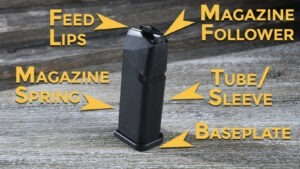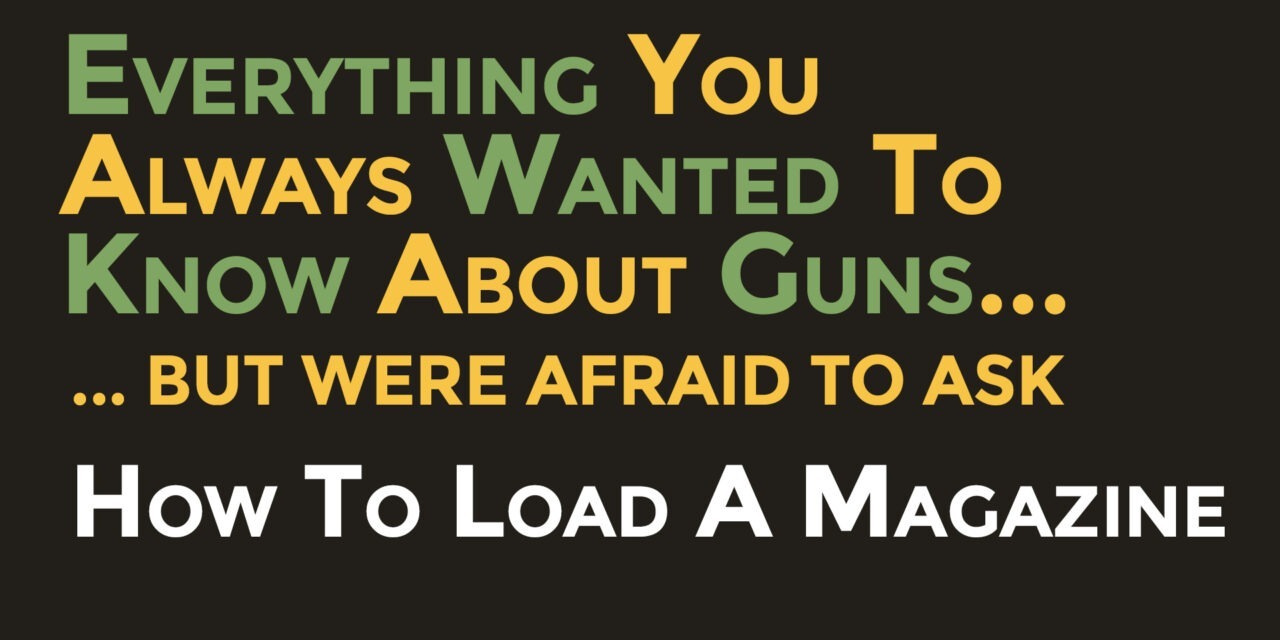Concealed Carry Tips
How To Load A Magazine
How To Load A Magazine
More and more people are realizing the need to take charge of their personal defense, and those people may or may not be familiar with guns before they make that decision. I recently attended a concealed carry class that was full of people who had never touched a gun in their lives, much less fired one. One couple, in particular, was struggling. They were trying to absorb as much information as they could, but they were having trouble with simple things, such as learning how to load a magazine.
This experience reminded me once again of the progress I’ve made as a gun owner, and just how much there is to know in order to be a safe and responsible gun owner. I honestly don’t remember when I learned how to load a magazine. However, I realize this is not the case for everyone who owns a gun. With that in mind, let’s take a look at how to load a variety of magazines for some common firearms.
Knowing How To Load A Magazine Means Knowing Some Terminology
Let’s begin with some terms so we can understand what we’re talking about. First off, we are loading rounds (or cartridges) not bullets. The bullet is the part of the cartridge that gets violently shoved out of the barrel when the gun is fired. Secondly, these are magazines, not clips. Clips hold rounds that get inserted into a magazine. The magazine holds the rounds before they are shot out of the gun.
The magazine itself is made of different things. The tube of the magazine is the metal or plastic shell that surrounds everything inside. The feed lips are at the top of the tube and position each round to be fed into the firearm. The magazine spring pushes each round up into the firearm. The follower is the metal or plastic part that is pushed up by the spring and follows the rounds up the tube of the magazine, delivering them into the gun to be fired. Lastly, the baseplate of the magazine holds the spring in place and keeps the rounds from flying out the bottom.
inside. The feed lips are at the top of the tube and position each round to be fed into the firearm. The magazine spring pushes each round up into the firearm. The follower is the metal or plastic part that is pushed up by the spring and follows the rounds up the tube of the magazine, delivering them into the gun to be fired. Lastly, the baseplate of the magazine holds the spring in place and keeps the rounds from flying out the bottom.
Different Magazines, Different Loading Methods
There are also different kinds of magazines. Single stack magazines load their cartridges in a single row. As such, they hold fewer  rounds than a double-stack magazine. Double stack magazines sort the rounds inside into two overlapping columns. This in turn means that they hold more than single-stack magazines, but they also have more issues with reliability. Those two rows of cartridges can get tangled up inside the magazine, leading to a failure to feed malfunction with your gun.
rounds than a double-stack magazine. Double stack magazines sort the rounds inside into two overlapping columns. This in turn means that they hold more than single-stack magazines, but they also have more issues with reliability. Those two rows of cartridges can get tangled up inside the magazine, leading to a failure to feed malfunction with your gun.
Different Paths To The Same Goal
My technique for loading an AR-15 magazine is different from most other techniques. Rather than press down on the follower and slide each round into the magazine from the front, I roll each round over the top of the magazine feed lips. This is how I load a magazine for the AR since I bought my first AR decades ago, and so far, it’s worked well for me.
My process for loading both single-stack and double-stack magazines is more conventional. I press down on the follower with the thumb of one hand, and then feed the round into the magazine, tucking each round under the feed lips and then moving on. There is one exception to this process. Some single-stack magazines have small tabs on the outside of the magazine that allow you to take the tension off the magazine spring as you load ammo into the magazine. This, in turn, makes the process of loading each new round a lot easier. If your magazine has these tabs, use them, it will make your life easier.
Speed Things Up
Speaking of how to load a magazine the easy way, I am a big fan of speedloaders. A speedloader is exactly that: It speeds up the process of loading your magazine. I use a Maglula Uplula loader practically every time I have to load up a pistol magazine. Not only does it make the task of filling my mags go by quicker, it also saves wear and tears on my thumbs.
process of loading your magazine. I use a Maglula Uplula loader practically every time I have to load up a pistol magazine. Not only does it make the task of filling my mags go by quicker, it also saves wear and tears on my thumbs.
Now that you know how to load a magazine, please do so safely. Make the four rules of gun safety a part of your life, and enjoy your journey through shooting sports and the armed lifestyle. Guns are fun, and speeding up your time loading magazines means there is more time to shoot, and that’s always a good thing.

